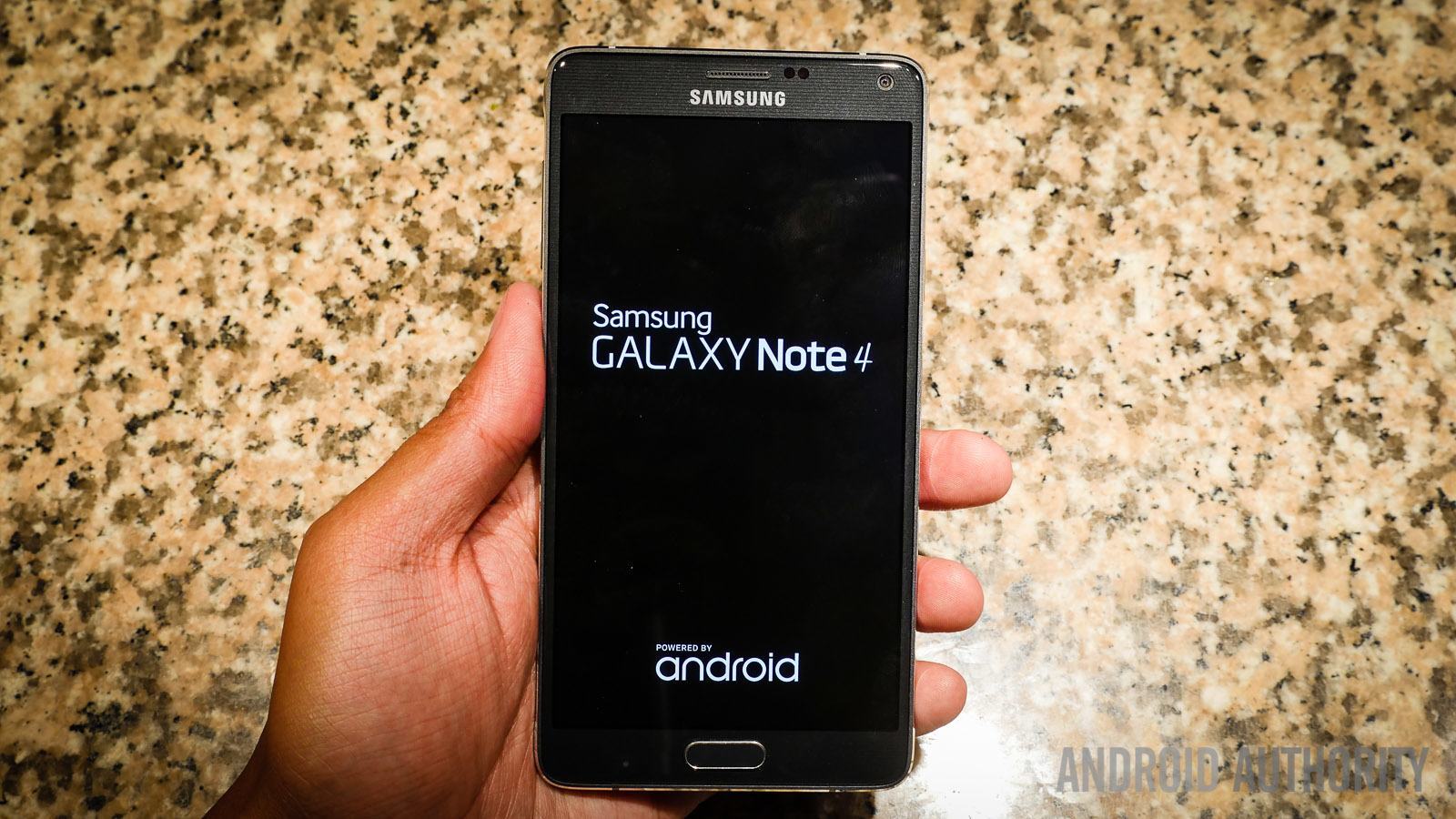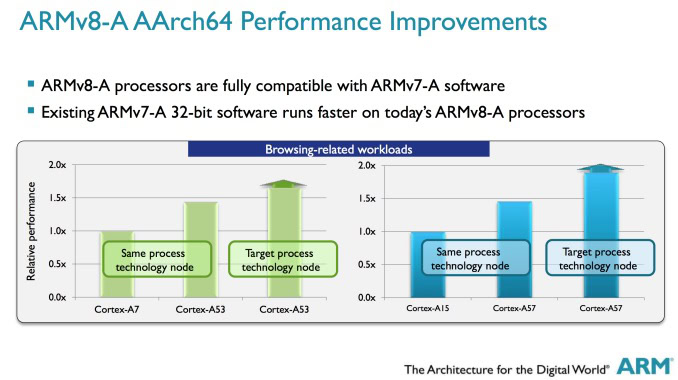Affiliate links on Android Authority may earn us a commission. Learn more.
Note 4, 64-bit, and Android L: what you need to know
Published onOctober 10, 2014

With the rollout of the Samsung Note 4 already underway, the concerns that Samsung makes one model with a Qualcomm processor and one model with a Exynos processor is rearing its ugly head again, just like it did with the Note 3. But this time, the questions about which countries get which model seem to be even more intense than normal. This is because the Exynos processor is actually 64-bit capable.
The Cortex-A57 runs 32-bit software almost 1.5 times faster than a Cortex-A15.
In some regions, Samsung will be shipping the Note 4 with the Exynos 5 Octa 5433. It is a 64-bit, octa-core processor with four 1.3 GHz Cortex-A53 cores plus four Cortex-A57s. Conversely, the Qualcomm variant will ship with the Snapdragon 805. The 805 is a 32-bit quad-core processor with four 2.5 GHz Krait 450 cores. Since the Note 4 doesn’t use a 64-bit processor across all its models, Samsung is selling the Note 4 as a 32-bit device, and nowhere (as far as I know) is Samsung marketing it as a 64-bit device. As such, Samsung will treat all Note 4 devices equally, it won’t favor one variant over another.
Some people are worried about the “future proofing” of the Note 4. The worry seems to be that, if Samsung keeps the Note 4 as 32-bit only, when some models are capable of running in 64-bit mode, then the Note 4 has no future, it is doomed to be old before it has even been released. Such thinking really isn’t warranted. Let me explain.
First of all, 32-bit smartphones are in no danger of extinction just yet. Almost every smartphone launched this year was a 32-bit phone including all the big hitters like the Samsung Galaxy S5, the HTCOne and the offerings from Sony and others.
Android isn't going to drop 32-bit support just yet.
None of these phones can be considered obsolete by any measure. The 64-bit Android smartphone market is still very much in emergence. For example, Qualcomm’s Snapdragon 810 isn’t officially due until Q1 2015. This means we will continue to see 32-bit phones being released all through 2015 and probably well into 2016, especially in the low- and mid-range. In fact, in emerging markets we may well see 32-bit phones in the majority still in 2017. When the price of 64-bit silicon comes down to the price of today’s 32-bit chips, then 64-bit processors will start to become the norm.
Secondly, Android isn’t going to drop 32-bit support just yet. Considering the long term viability of 32-bit smartphones, support will continue for them in Android for many years to come. In fact, there is no technical reason why 32-bit support would ever need to be dropped at all. We already know that the Note 4 and Galaxy S5 will probably get Android L before the end of the year. Although Android L supports 64-bit processors, it runs equally as well on 32-bit processors. All the benefits of Android L, including the switch over to ART (the new Java virtual machine), can be enjoyed by users on both 32-bit and 64-bit devices.
Cortex-A57 is ARM’s fastest 32-bit processor
No, you didn’t read that wrong. Of course the Cortex-A57 is designed to be a 64-bit processor, but actually it is a mighty fine 32-bit processor as well. According to ARM, the Cortex-A57 runs 32-bit software almost 1.5 times faster than a Cortex-A15!

Also, 32-bit code running on ARMv8 processors like the Cortex-A57 get access to some of AArch’s unique features, like its hardware level cryptography instructions and more advanced SIMD instructions.
Many people think in terms of the mythical 4GB memory barrier when talking about 64-bit computing. Although 64-bit addressing does allow more memory to be accessed, ARMv7 processors have been able to access more than 4GB of memory for a long time. Using a feature known as Large Physical Address Extensions (LPAE), a Cortex-A15 processor can address 1024GB of memory!
Anyway, in terms of “future proofing,” memory is irrelevant. You can’t upgrade the memory in your smartphone. Since Samsung decided to ship the Note 4 with 3GB of RAM then there is no way you will ever need support for more than 4GB, regardless of which processor (Qualcomm or Exynos) you have in your device.
Summary
To recap:
- The Note 4 is being marketed as a 32-bit device
- 32-bit smartphones are here for a long time yet
- Android L supports 32-bit and 64-bit devices
- Android will continue to support 32-bit devices for many years (if not indefinitely)
- The Exynos 5 Octa 5433 is a great 32-bit processor (as is the Snapdragon 805)
- Note 4 owners don’t need support for more than 4GB
So if you are still dithering about buying a Note 4, you can stop worrying now and go out and get one!